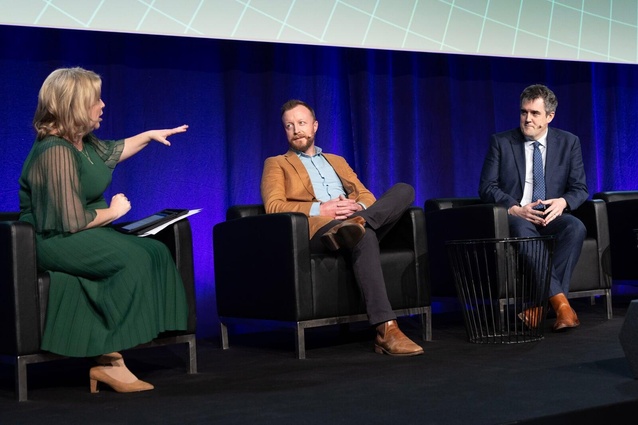Building Nations 2025: A vision for New Zealand?
The Building Nations 2025 event set out to lift our sights, plan for the long term, and bring all sectors of the industry together to deliver that vision. Anthony Vile reviews the summit.
“The vision for New Zealand’s infrastructure must reflect who we are and what we want to achieve in this country. Too often, we see infrastructure as simply a completed project, as a means to an end. Investing in the right kinds of assets and using our existing infrastructure more effectively will require us all to be united as we step up and paint a coherent picture of what Aotearoa can be.”
Building Nations 2025 set out to lift our sights, plan for the long term, and bring all sectors of the industry together into delivering that vision.
Key themes running through the conference:
Resilience, efficiency, integration, evidential basis, pipeline certainty, bipartisanship, balance, and a future focus for our tamariki were — all great stuff, thanks to our hosts, Infrastructure New Zealand.
Infrastructure _ Intergenerational Investment
New Zealand’s infrastructure — roads, pipes, schools, power lines, hospitals, and much more — touches our lives daily. Yet compared to other high-income nations, we spend more per person but sit in the bottom 10% for value returned. We need to get smarter about investing and make tougher calls.
The draft National Infrastructure Plan proposes how to fix what’s broken, plan better for the future and focus our infrastructure dollar where it delivers the greatest impact.
Infrastructure is a legacy — a gift to our children and grandchildren. The past 30 years of under-investment in maintenance, renewal and new delivery may have kept the books looking tidy, but it has left us with today’s infrastructure deficit. Infrastructure is an intergenerational investment in our future wellbeing.
First Impressions
Infrastructure New Zealand opened the doors to its Annual Building Nations Conference in Wellington under the optimistic theme, A Vision for New Zealand. My conference experience started on the right note: a bus at the bus stop on time, moving freely through dedicated lanes and the Mt Victoria tunnel. A standing ovation for Wellington’s vision and execution of PT infrastructure. The conference floor was packed with a mix of public servants, economists, planners, engineers, and various industry providers. Noticeably absent in the attendee list: architects, landscape architects and urban designers. A genuine national vision needs cross sector coordination and participation from all built environment professions. Infrastructure left solely to engineers and politicians will no doubt be functional but may miss the opportunity to take it to the next level, not gold plated, but design led, place based and high value.
The Politics of Pipes and Pavement
Infrastructure’s public nature — in both form and funding — guarantees its politicisation. This was manifest throughout the proceedings and will remain so as we head into local body and national elections.
What is the vision for New Zealand? Is it the same for Aotearoa? What about New Zealand Inc? First port of call lets decide what waka we are in?
The rebirth of spatial planning at a national level may not be the complete panacea for our infrastructure and by extension economic woes, but an across the board buy-in and commitment to spatial processes and projects aligned with our national vision is an opportunity to build a nation. A map to provide clear navigation of the waka supported by a crew all paddling in the same direction.
The morning opened with a warm mihi from Taranaki iwi, Te Ātiawa — capped off with a cheeky Waltzing Matilda aimed squarely at our visiting Australian colleagues.
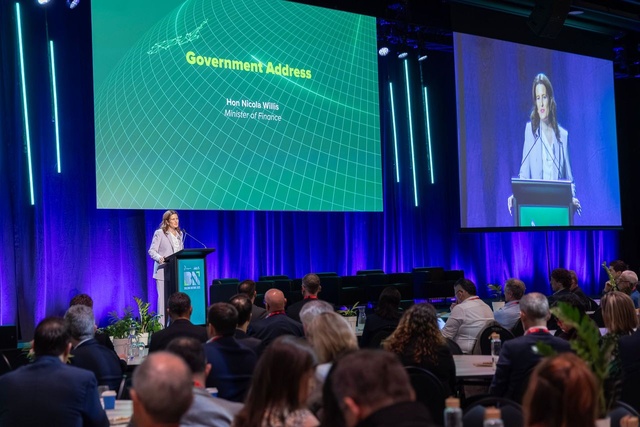
Nicola Willis: Delivering Better, Faster, Greater Value
The Honourable Nicola Willis pumped the floor with her own rendition of the “better, faster, greater value” chorus, promising benefits for our children and grandchildren: $61.8 billion confirmed investment over four years, unlocking value, reducing cost, replacing the RMA, and delivering bipartisan certainty to the sector.
“Our government is backing you,” she declared — fast-tracking straight into next year’s election campaign.
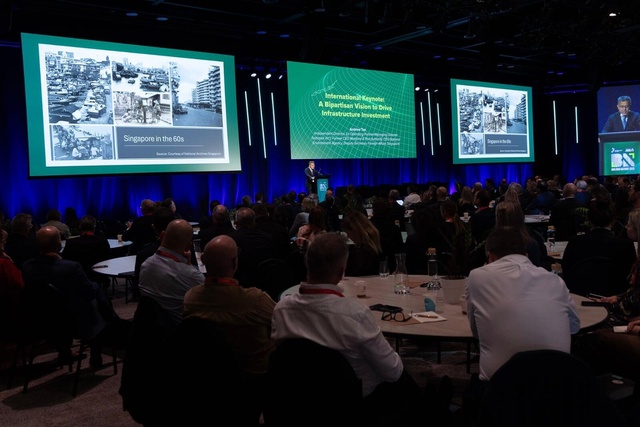
Andrew Tan: Lessons from Singapore
Keynote speaker Andrew Tan explored one of the conference’s central themes: bipartisanship. Drawing on Singapore’s transformation from “post-war mudflats” to a global metropolis, he outlined how long-term vision, integrated development, and good execution has delivered prosperity. This journey was described as deliberate and purposeful with infrastructure as a strategic means to achieve positive outcomes.
Singapore’s first concept plan was formulated in 1971 to guide the physical development of Singapore and ensure the optimal use of limited land resources to meet the residential, economic and recreational needs of a population that was projected to reach 4 million by 1992.
Importantly affordable housing was considered as vital infrastructure. Delivery of housing was led by the Housing Development Board with the goal of creating “great living environments” where communities could thrive — were green, connected, and resilient. Eighty percent of Singapore’s housing remains under HDB ownership.
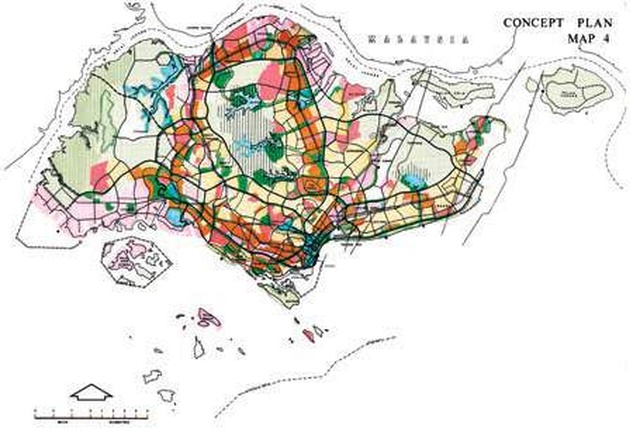
National masterplanning has been revised every decade since 1971. It has guided investment and development priorities such as Changi Airport, construction of container ports, river regeneration, and net-zero industrial corridors. Climate change has been accepted as a manageable threat with storm water and sea level rise integrated with provision of open and recreational space infrastructure advancing notions of resilient and liveable cities.
The relevance to New Zealand’s own challenges was impossible to miss.
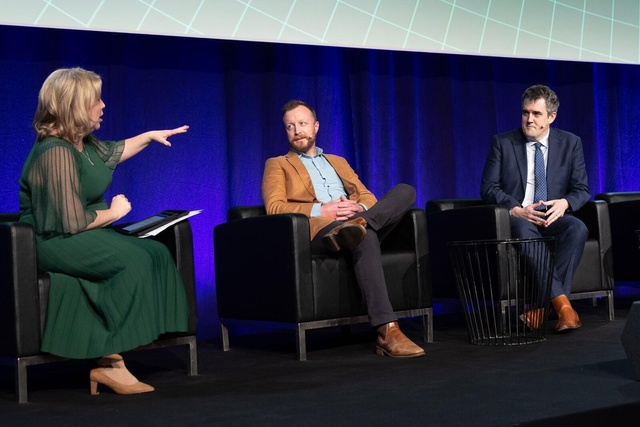
Chris Bishop and Kieran McAnulty: Bipartisan Agreement
I hear regularly that — “what New Zealand needs is a long-term infrastructure plan that transcends political cycles”. The Minister for Infrastructure Chris Bishop echoed the need for a long-term plan that transcends political cycles. The idea that we need to say yes more and no less was communicated as a response to RMA triggered frustrations, and as a means to stimulate growth and create efficiencies. Just saying yes all the time also has its dangers as any parent would reflect. Too many lollies is not healthy.
His opposition counterpart, Kieran McAnulty, joined him on stage presenting a theatrical scene of agreement, bipartisanship and good will within the context of political and ideological differences. Let’s see what happens when the rubber meets the road on another fast tracked road of national significance.
The good news: the National Infrastructure Commission’s draft plan is progressing, with consultation recently completed and an updated version due soon. Once funded, projects that are in the plan must be shielded from political backtracking. As Singapore has shown, planning, funding and long term agreement and protection of projects from political meddling needs to be ingrained into the national psyche and infrastructure pipeline.
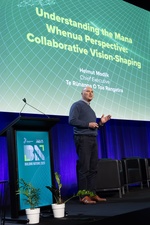
Helmut Modlik: A Mana Whenua Vision
For me, the presentation with the most direct local relevance came from the CEO of Te Rūnanga O Toa Rangatira CEO, Helmut Modlik, speaking eloquently on the theme Understanding the Mana Whenua Perspective: Collaborative Vision-Shaping.
Ngāti Toa’s purpose is simple: to advance the mana, wellbeing and prosperity of their people. “A future for our people, whenua, taiao, and communities requires a paradigm shift”.
This paradigm shift aligning with the overall theme of the conference, guided by:
- Long-term, intergenerational planning.
- Environmental stewardship and regenerative practice.
- A holistic, Te Ao Māori-led view.
Ngāti Toa’s strategic approach encompasses housing, education, economic development, environmental sustainability, and cultural preservation — all aimed at achieving intergenerational well-being and self-determination. Key initiatives include providing affordable housing options, fostering educational pathways for whānau and strengthening their connection to the natural environment. Not dissimilar to themes presented in the context of Singapore’s development with the additional value add of indigenous world views.
This has been achieved through the roll out of strategy and projects aligned with a vision aimed at shifting the current paradigm through a horizontally integrated ecosystem of direct delivery. With tikanga and technical delivery working hand in hand to achieve mauri ora (well being). The following key points aiding the process:
- Exercising rangatiratanga and co- investing directly in the world we want to live in.
- Setting goals for social and physical infrastructure to support “mauri ora “ aspirations.
- Co investment in a portfolio of enterprises delivering the changes we seek.
- Recognition of not just building and managing assets but stewards of the built environment leaving a legacy.
- Creating successful partnerships.
We were left with the closing wero or challenge “Find your spot on the waka and paddle like hell”
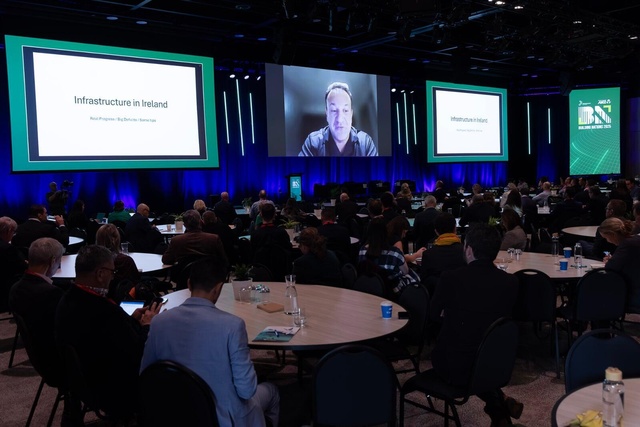
Leo Varadkar: An Irish Parallel
Former Irish Prime Minister Leo Varadkar brought another national story worth hearing. Ireland, similar to New Zealand in population, life expectancy and government debt levels, but well ahead in Gross National Product GNP (€419 vs €245 Billion) and average income levels.
Ireland’s economic miracle was hastened by social partnership and political consensus, a low corporate tax rate and talent attraction. Five year election cycles were considered beneficial compared to the challenges of delivery in New Zealand’s three year cycle.
Political consensus was demonstrated to have been built through its National Planning Framework 2021-2030, with dedicated agencies similar to Singapore, such as the Industrial Development Authority. Pipeline certainty was provided through the national planning framework and ongoing commitment of 5% of GNP invested in infrastructure.
Projects delivered:
- National Roads Programme.
- Dublin Metro.
- Luas Dublin light rail.
- Broadband.
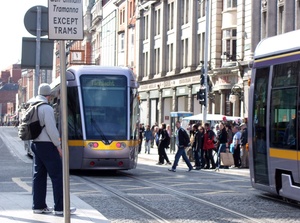
Mr Varadkar highlighted the one size does not fit all nature of delivery, the benefit of learning and creating efficiencies over time through rigorous feedback mechanisms, and consideration of differing contract types for large scale public infrastructure. He pointed to the variability and risk in “lowest price wins” scenarios with variations over time causing blow out and stress, compared to the example of negotiated maximum price contracts though being more expensive on paper delivering better outcomes and lower overall costs.
The lesson?
There’s no better time to build than now — tomorrow will always be more expensive.
What’s Holding Us Back?
New Zealand faces real challenges: vast geography, dispersed population, seismic risks, climate change, an ageing population, a shrinking workforce, and low productivity. If we can agree on a national infrastructure strategy that includes housing, opportunities abound. The availability of capital from growing global and national pension funds, a move to enable private/public partnerships and agreement on public investment and debt levels enable those opportunities. Austerity does not pay off in the long term.
Perhaps part of the problem is the story we tell. Headlines fixate on project costs and overruns rather than the long-term value each project can deliver. The real risk is doing nothing — deferring deficits to future generations to balance an election-year budget.
Restraint matters too. Not every project needs gold-plating. Design thinking and collaboration and can provide innovative solutions that are efficient, affordable and leverage added value opportunities.
Navigating Change
Change, like death and taxes, is certain — but endless change for its own sake erodes confidence. Reforming the RMA and other legislation must improve efficiency without losing sight of what defines us as a nation or protects our taonga.
Tensions will remain until we settle on a shared vision — one that puts our children at the centre and builds the infrastructure to enable “our” vision for the future.
Final thought
Infrastructure is more than roads and pipes. It’s the Waka we’re all paddling in together. A national vision is the intergenerational map we need to paddle forward, side by side. Bring it on, our tamariki need the outcomes and innovations of our smartly invested capital and labor, not inaction.
Useful Links:
1. RMA reform
2. Ministry for the Enviroment RM reform update
4. Singapore Housing and Development Board
5. Centre for Livable Cities, Singapore
6. Building Liveable and Sustainable Cities: A Framework for the Future, Singapore

